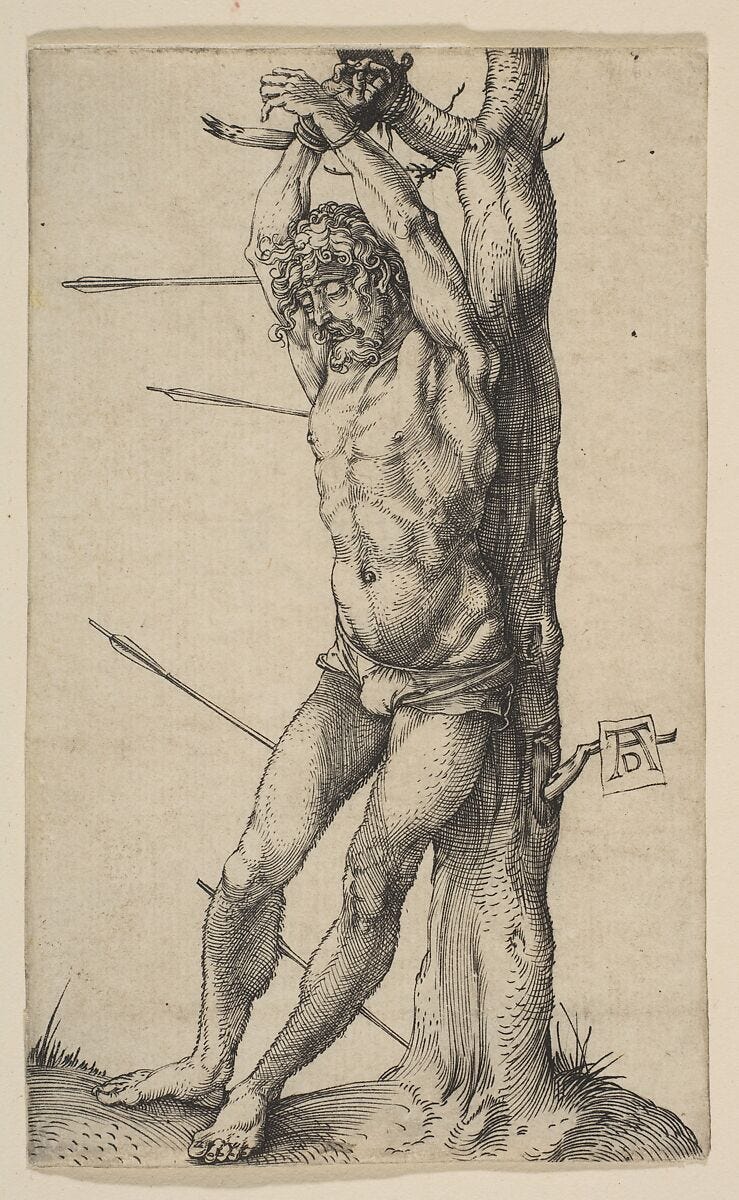This is an excerpt from my latest work, Gods and Monsters.
On July 5, 2023, the painting Saint Sebastian Tended by Two Angels, was sold at auction for $6.4 million. The sale was the first time the painting had gone to auction since it was confirmed to have been painted by Flemish master Sir Peter Paul Rubens. The last time it was sold at auction, in 2008, by Ivey-Selkirk, a St. Louis auction house, it sold for a mere $40,000. It had been misattributed as the work of French artist Laurent de la Hyre. The 2008 auction garnered considerable attention for the painting and soon scholars identified it as a long lost Rubens. Why then, did this newly attributed Rubens not sell for much more money? The record for a Rubens work at auction is $76.5 million. Sotheby’s estimated the painting between $5 and $7 million. In a cooling art market, this masterpiece failed to exceed the auction house’s high estimate. But, why? Perhaps the subject of the painting, rather than a sluggish market, is the reason for a tepid sale. Who was Saint Sebastian?
Sebastian was an early Christian saint and martyr. A soldier in the Praetorian Guard, he was employed to protect Roman Emperor Diocletian, emperor from 284 until his abdication in 305. Sebastian was executed for holding christian beliefs and trying to convert other guard members. Tied to a tree and shot with multiple arrows, miraculously, he survived, nursed back to health by a woman named Irene of Rome, who later became a saint in her own right. After recovering from the failed execution, Sebastian again publicly criticised Diocletian for his persecution of christians and was executed by clubbing, which finally was the death of him. Irene retrieved his body from a river and buried him in an early basilica outside the Aurelian walls of Rome. It’s interesting that the execution by arrows, not the clubbing which killed him, has become the event the martyr is known by and easily distinguishes him from other saints. During the middle ages, St. Sebastian, revered for his endurance and strength, was called upon to intercede on behalf of those dying of the plague and was designated third patron saint of the city of Rome, after Saints Peter and Paul. He has become the protector of the military and athletes, an intercedent of the ill during epidemics and plagues, inspiration for artists throughout history, and along the way, has morphed into a gay icon.
In Saint Sebastian Tended by Two Angels Rubens demonstrates all of the classical techniques he’s known for. The statuesque Sebastian, draped in sumptuous fabric, looks more like a greek God than a warrior who has been slain by multiple arrows. His beautiful, hairless body appears limp, but not near death. His skin tone is radiant and his clean wounds contain only touches of blood. The muscular angels adoringly remove the arrows and free him from bondage. His face seems calm, as if he’s fallen asleep, not near death. His armor, untarnished and in perfect condition, rests at his feet. And then there’s the hair! Sebastian and his attendant angels sport glorious curly locks that are perfectly tousled. It’s clear why artists throughout the ages have been seduced by Sebastian, and Ruben’s version flawlessly portrays his queer allure.
Sebastian’s youthful image is not new, but is inaccurate. Prior to the renaissance, he was portrayed as an older, more grizzled and weathered warrior, which seems closer to who he really was and how he actually looked. How did he achieve Adonis status?





